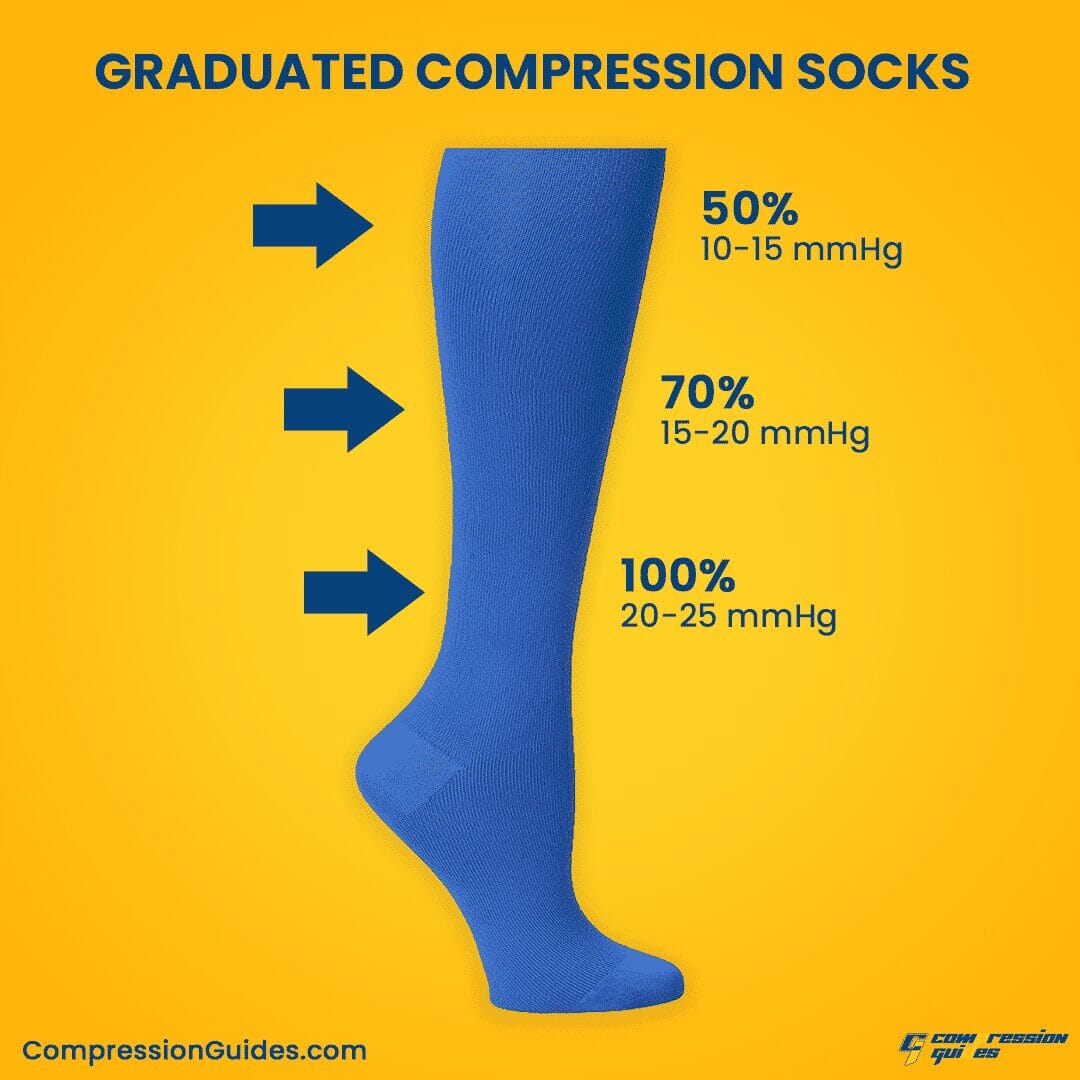

If you've ever purchased over-the-counter compression socks, you may have noticed "mm Hg" on the tag. That depends on the type of sock and what you are using it for. And the effects may be at least partially due to a placebo effect. Some people wear nonmedical compression socks while exercising or playing sports to enhance performance and recovery. Relieve leg pain and swelling in pregnancy Lower the risk of deep vein thrombosis or the symptoms of post-thrombotic syndrome Stop blood from pooling or clotting in your leg veins Promote lymphatic drainage for people with lymphedema Heal or prevent leg ulcers and other symptoms of chronic venous insufficiency A healthcare provider may prescribe compression socks to: That's why you might see people on long flights wearing compression socks.ĭepending on the type of sock used, compression therapy can help with several conditions.

Prolonged sitting or standing can slow circulation and cause swelling or edema in your legs or ankles. Like anti-embolism stockings, they provide gradient pressure. Medical or graduated compression stockings: Healthcare providers prescribe these medical-grade socks to provide a specific level of compression. They exert the greatest pressure at the ankle, gradually declining toward the top of the sock (gradient pressure). They provide uniform compression throughout the garment and are not as tight as medical compression stockings.Īnti-embolism stockings: These stockings are designed to reduce the risk of deep vein thrombosis (a blood clot that forms in a deep vein) in people who are not mobile.

Nonmedical support hosiery: You can buy these garments –– including flight socks and elastic support socks –– over the counter. The socks usually fall into three main categories: There are also arm and full-body compression garments. While they typically fall below the knee, they can also come up to the thigh or be worn as tights. To effectively provide pressure, compression socks are usually made of synthetic materials such as lycra, nylon, or spandex. Are there different types of compression socks? The compression increases blood flow to help prevent blood from pooling in your leg veins, which could cause damage and clotting. However, she doesn’t recommend compression socks for people with certain heart conditions, like congestive heart failure and arterial disease.View more medications What’s the science behind compression socks?Ĭompression socks apply pressure to your legs and ankles. They definitely make my feet and legs feel much less tired,” she says. “I also wore them daily when I was pregnant to prevent varicose and spider veins. Outside of post-workout recovery, women who are pregnant and people with certain health conditions, like those who have type 2 diabetes or those who have suffered from deep vein thrombosis (DVT), can also benefit from wearing compression socks to help reduce their risk of developing blood clots and swelling in the feet and legs.Īs a podiatric surgeon, Parthasarathy is on her feet all day, so she likes to wear compression socks underneath her scrubs. Meet the experts: Priya Parthasarathy, D.P.M., a podiatrist in Silver Springs, MD Anne Sharkey, D.P.M., a podiatrist at North Austin Foot & Ankle Institute in Austin “Many of my runner patients swear by them, stating that they reduce muscle fatigue and soreness, which in turn produces a faster recovery.” and spokesperson for the American Podiatric Medical Association (APMA). “Compression socks place constant pressure on the legs to prevent the accumulation of fluid the compression is thought to help the blood circulate better which allows more oxygen to get to the tissues,” says Priya Parthasarathy, D.P.M., a podiatrist in Silver Springs, MD. Studies suggest that compression socks can help reduce muscle damage and inflammation, especially after a big physical feat like a marathon. Whether you’re traveling on an international flight that lasts for several hours or you just finished an intense workout that was hard on your legs and feet, the best compression socks provide the relief you need for muscle aches and foot pain. We updated this article in May 2023 to add more information about each featured product, based on extensive research done by our team.


 0 kommentar(er)
0 kommentar(er)
